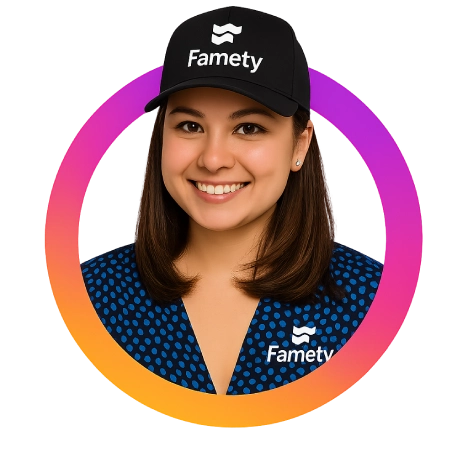- TL;DR stands for “Too Long; Didn’t Read,” a popular acronym simplifying lengthy LinkedIn posts into short, impactful summaries.
- It helps professionals communicate complex ideas clearly, saving readers time while increasing engagement.
- Commonly used in post intros, conclusions, and comment sections to highlight key takeaways.
- Using TL;DR effectively boosts visibility, promotes readability, and supports audience retention.
TL;DR has become one of the most practical acronyms for professionals using LinkedIn. It reflects the fast-paced nature of online communication, where readers value brevity and clarity over lengthy explanations. As posts on LinkedIn become more detailed, TL;DR offers a way to summarize information while maintaining professionalism and engagement.
TL;DR Meaning in One Line
TL;DR means “Too Long; Didn’t Read,” a short summary added to LinkedIn posts to share key points quickly.
Defined as “Too Long; Didn’t Read,” a summary phrase that condenses lengthy posts into clear, digestible insights.
The TL;DR tag helps summarize large chunks of text into a few sentences. It gives readers immediate clarity and prevents them from skipping over valuable content. Many LinkedIn creators use it to provide concise takeaways that capture their main message effectively.
Used on LinkedIn to help busy professionals grasp key takeaways at a glance.
LinkedIn’s professional audience often browses quickly between meetings or tasks. TL;DR helps them scan content efficiently while still understanding the essence of the message. It’s a perfect match for readers who prefer highlights over heavy text.
How TL;DR improves readability, boosts engagement, and keeps posts audience-friendly.
By adding a TL;DR section, creators make their posts more approachable and inclusive. This structure helps users decide whether to read further, increases dwell time on posts, and fosters engagement through comments, shares, and discussions.
Where You See TL;DR on LinkedIn
The use of TL;DR on LinkedIn is becoming more common as professionals look for clarity in long-form posts and discussions. It helps busy users scan through dense information, making posts more engaging and accessible. Whether in personal branding updates, thought-leadership articles, or comment recaps, TL;DR turns complex ideas into quick takeaways that keep the feed readable and interactive.
LinkedIn posts summarizing long professional insights or case studies.
Many users add a TL;DR line at the end of posts that include detailed insights, business lessons, or storytelling. For instance, a professional might write about a project’s challenges and end with “TL;DR: Communication and empathy drive results.” This format keeps posts informative while appealing to readers who prefer concise conclusions.
Article conclusions or summaries that help readers quickly understand main points.
Writers on LinkedIn often use TL;DR at the end of an article to summarize findings or key recommendations. It allows readers to grasp essential takeaways even if they skim the text. This is particularly useful for case studies, research summaries, and productivity guides.
Examples of where TL;DR appears most:
- End of long-form posts with multiple lessons.
- Within articles summarizing industry trends.
- As pinned comments highlighting conclusions.
- Inside carousel posts or infographics for clarity.
Comment sections where users share a short recap of discussions.
TL;DR can also appear in comments under popular threads or group discussions. Users employ it to recap the main argument or to simplify debates into key points, ensuring everyone can follow the conversation without scrolling endlessly.
Hashtags like #TLDR and #TooLongDidntRead used to highlight condensed insights.
Creators often use these hashtags to mark summarized content or thought snippets. Tagging a post with #TLDR signals that the content includes a quick recap, making it more discoverable for audiences looking for concise professional insights.
How to Use TL;DR the Right Way
Using TL;DR effectively on LinkedIn is about balancing clarity with professionalism. The goal is not just to shorten content but to make it instantly understandable for time-conscious readers. When used properly, TL;DR increases post engagement, improves readability, and strengthens your authority as a clear communicator.
Add TL;DR at the start or end of your post to summarize your key message.
You can place TL;DR either at the beginning to preview your main idea or at the end as a wrap-up. Both placements work well, depending on your post type. Starting with it helps catch attention early, while ending with it provides a neat summary for readers who scroll quickly.
Keep your summary under two sentences to maintain attention.
A TL;DR should be short and impactful. Aim for one or two concise sentences that capture your post’s essence. The best ones highlight results, lessons, or main insights, such as:
- “TL;DR: Communication drives collaboration.”
- “TL;DR: Focus on consistency, not perfection.”
This keeps the post digestible while encouraging more people to engage.
Use clear and action-oriented phrasing that reflects your tone.
The summary should match your voice and purpose. Whether your post is inspirational, analytical, or instructional, make sure your TL;DR aligns with the overall tone. Avoid jargon and use verbs that invite thought or action, like learn, build, grow, or apply.
Avoid overusing TL;DR in every post; reserve it for long or detailed content.
Not every post needs a TL;DR. Using it too often can make your writing predictable and reduce impact. Save it for longer posts, thought-leadership pieces, or analytical content where readers truly benefit from a quick takeaway. This helps preserve its value and signals that your TL;DR always delivers meaningful summaries.
TL;DR vs Related Acronyms
On LinkedIn, TL;DR often appears alongside other acronyms that support professional communication. Each one enhances content in a unique way, whether by summarizing ideas, clarifying tone, or connecting audiences. Understanding these terms helps you use them strategically to make your profile, posts, and messages more engaging and readable.
Comparison Table: TL;DR vs LION vs ATS vs ICP
| Acronym | Full Form | Purpose on LinkedIn | When to Use It |
| TL;DR | Too Long; Didn’t Read | Summarizes lengthy posts into quick insights | When sharing long or complex posts |
| LION | LinkedIn Open Networker | Expands professional connections openly | When you’re open to connecting broadly |
| ATS | Applicant Tracking System | Filters and manages job applications | When discussing recruitment or job posts |
| ICP | Ideal Customer Profile | Defines your target audience or client persona | When talking about B2B marketing or sales |
This comparison shows how TL;DR differs from network and business-oriented acronyms. While LION and ICP focus on reach and targeting, TL;DR strengthens communication clarity and ensures your ideas get noticed.
When to use TL;DR instead of LION for content visibility
LION builds reach through networking, but TL;DR helps that network stay engaged. If your goal is to make complex posts more approachable rather than expand your audience, TL;DR is the better choice. Together, they form a powerful combination: reach plus readability.
How ATS connects to TL;DR through hiring and clarity
Recruiters often share posts about job openings or hiring trends that can be lengthy. Using TL;DR at the end of such posts helps candidates quickly understand the opportunity, making hiring communication clearer and more inclusive.
When ICP overlaps with TL;DR in professional storytelling
ICP focuses on identifying your ideal audience, and TL;DR ensures that your message resonates with them. For marketers and business leaders, pairing these two helps you tailor content that is both relevant and digestible.







